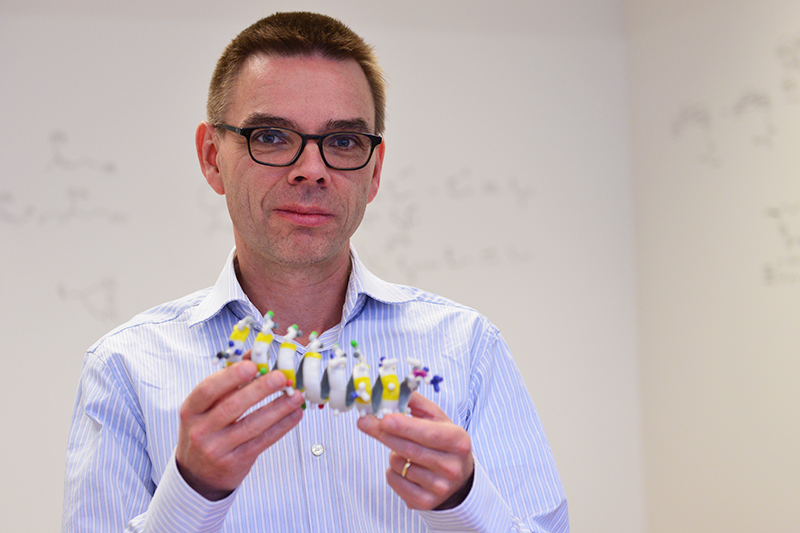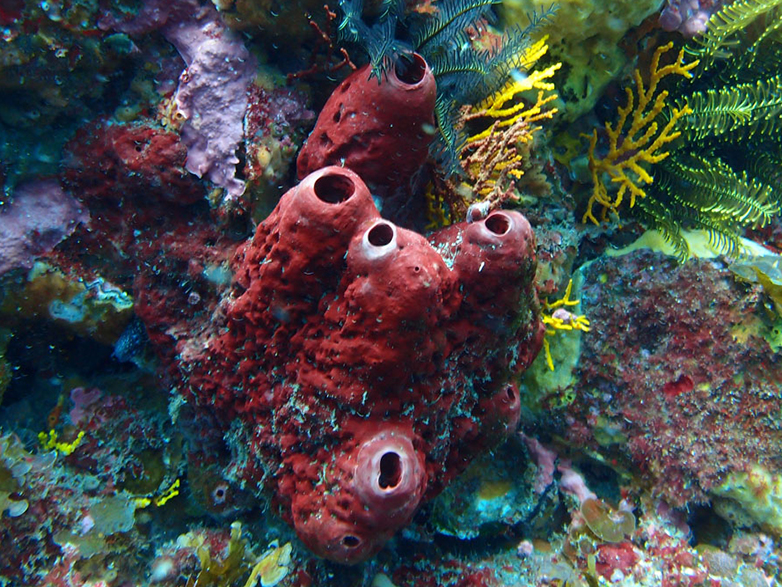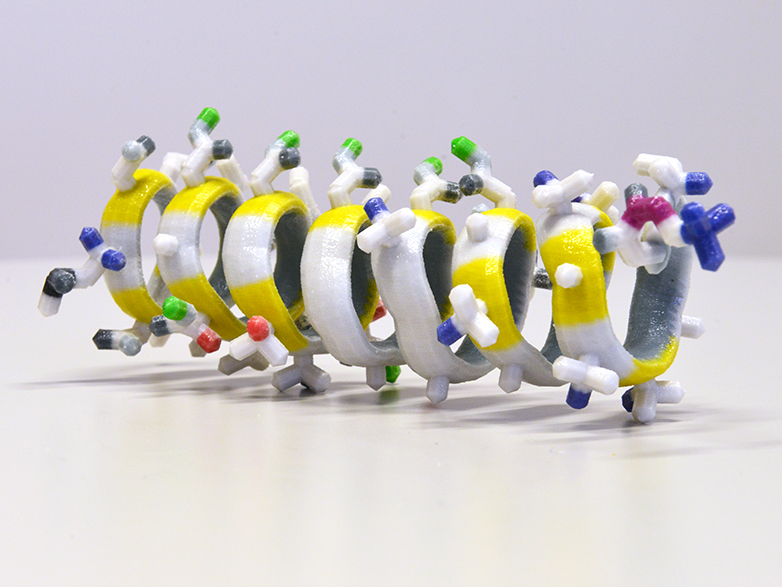In a simple way to great complexity
ETH microbiologists have succeeded in showing that nature produces one of the most complex known bioactive natural products in a staggeringly simple way. The molecule originates from bacteria living in sea sponges. In future, it may be possible to produce the agent very easily using biotechnology, making it an interesting avenue for cancer research.

It is one of the most complex known naturally occurring peptides: a cytotoxic nanotube used by sea sponges living in the Pacific to defend themselves against other creatures. The agent is produced by bacteria that live in symbiosis with the sponges. As part of this process, the bacteria’s protein-producing machinery first produces a precursor peptide, which is then modified at no fewer than 49 precisely defined locations by further bacterial enzymes (see box). These modifications determine the form and function of the peptide nanotube and improve its stability.
“Peptides with so many specific chemical modifications are unusual and are rarely found in nature. We don’t know of any examples with greater complexity,” says Jörn Piel, a professor at ETH Zurich’s Institute of Microbiology. It is also noteworthy that the bacteria require only seven enzymes to perform the modifications, as Piel and his colleagues have discovered.
These enzymes were already known from genetic studies, though until now it was disputed whether they were enough to mediate all the modifications. Piel, his postdoc Michael Freeman, now a professor at the University of Minnesota, and further co-workers therefore put this premise to the test: they inserted the genes of these enzymes one by one into laboratory bacteria of the types E. coli or Rhizobium, thus using a multi-step biotechnological approach to produce peptides with almost all of the 49 modifications. As a result, the researchers were also able to show that the “minimalist approach” of seven enzymes is sufficient to mediate the modifications. They reported these findings in the journal Nature Chemistry.
“We see an immense contrast between the incredible complexity of the natural product and the extremely economical enzymatic system needed for its production.”Jörn Piel
A potential new anti-cancer agent
Cytotoxins such as the sponge bacteria peptide studied here are medically interesting, for example as potential new anti-cancer agents. However, it is not possible to obtain the peptide as a natural product directly from the sponge bacteria on an industrial scale. “The bacterium requires a specific sponge, which is only found in Japan, as its symbiotic partner. To date, it has not been possible to cultivate it in the lab,” Piel explains.
He and his colleagues are therefore attempting to optimise the biotechnological production of the sponge bacteria molecule, which is currently still an elaborate process. Their aim is to find a cultivable bacterium into whose genome the assembly instructions of all seven enzymes can be inserted at the same time, so that the process can be used to produce the complex molecule in a single step.
A tool for biotechnology
However, it is not only the peptide studied here that is of interest for research, but also the seven enzymes. One of these can take the peptide building blocks – the amino acids – and flip their atomic structures into their mirror image. “This enzyme changes the configuration of every second amino acid in the peptide. Only then do the conditions exist for the peptide’s tube structure to form,” says ETH Professor Piel. It is rare to find amino acids with a mirror-image configuration in nature, so the enzyme that mediates the structural change represents an interesting tool for synthetic biology and biotechnology.
Bacteria that cannot be cultivated in the laboratory are one of Piel’s main areas of research. Only a small fraction of naturally occurring bacteria will grow under laboratory conditions and are therefore easy to research. Of the bacteria living in sponges, for example, only between one in a thousand and one in a hundred can be cultivated. By carrying out research on uncultivated bacteria, scientists hope, among other things, to find new kinds of enzymes with possible applications in biotechnology, as well as new, medically relevant natural products.
Post-translational modifications
Peptides and proteins are produced in cells by ribosomes. These enzymes read the genetic blueprint stored on the messenger RNA molecules and assemble peptides and proteins from individual amino acids according to a building block system. Biologists call this step translation. In organisms, many proteins then undergo further modifications, for example when specialised enzymes bring about chemical modifications in specific amino acids. Experts refer to this process as post-translational modification. Nevertheless, it is rare to observe such extensive and varied modifications as in the case of the sponge bacteria peptide studied here.
Reference
Freeman MF, Helf MJ, Bhushan A, Morinaka BO, Piel J: Seven enzymes create extraordinary molecular complexity in an uncultivated bacterium. Nature Chemistry, 28 November 2016, doi: external page10.1038/nchem.2666call_made


